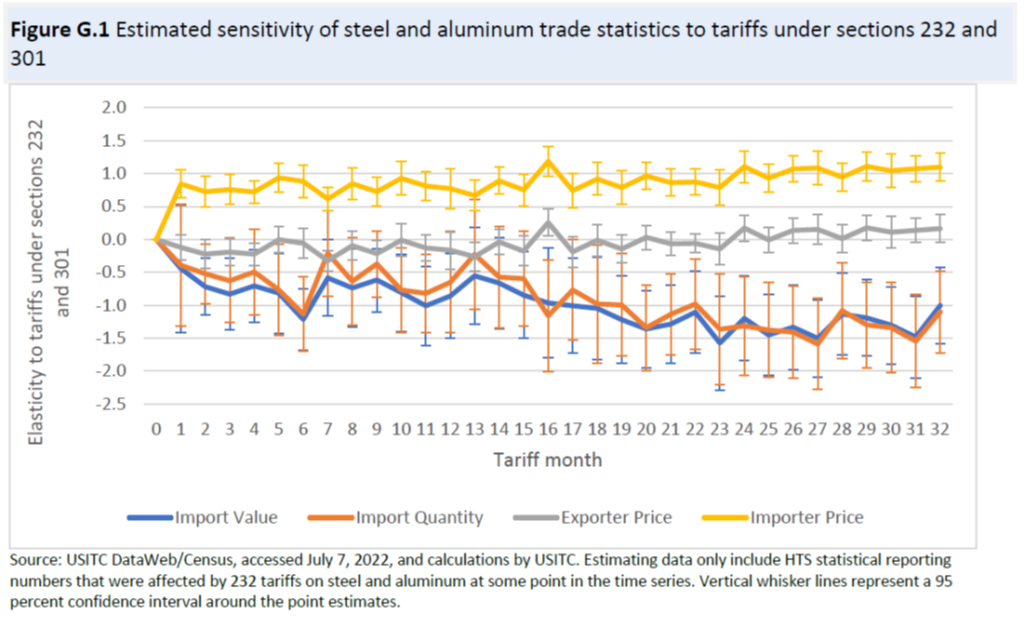“So China Is Now Paying Us Billions Of Dollars In Tariffs”
That’s economist Trump in 2018, as cited in Coy (2018). Now, from USITC “Economic Impact of Section 232 and 301 Tariffs on U.S. Industries” (page 22), a conflicting assessment.
The Commission’s econometric model estimates that tariffs undersections 232 and 301 resulted in a nearly one-to-one increase in pricesof U.S. imports following the tariffs. This implies that a 10 percent advalorem tariff raised the price of U.S. imports from China by about 10percent. This nearly complete pass-through (meaning that pricesreceived by exporters were largely unaffected and prices paid by U.S. importers increased by the same amount as the tariffs) is unusual but has been similarly found by other recent studies, which conclude that U.S. importers have borne almost the full burden of section 301 tariffs.
Here is the estimated pass-through of tariffs into steel prices.
(Click on image to enlarge)

Source: US ITC (2023).
Estimates of tariff pass-through are pretty close to one, i.e., a 25% ad valorem tariff results in essentialy a 25% increase in price faced by a domestic consumer (broadly defined). This means that we are paying the tariffs, not the Chinese, in these two cases.
So, if you weren’t paying attention, the US seems to be a small country insofar as steel and aluminum markets are concerned (see Econbrowser posts [1], [2], [3], – so contra Mr. Bruce Hall’s comment).
More By This Author:
Back In The Real Economy: Business Cycle Indicators, Mid-MarchBanking Turmoil: Deregulation Vs. Monetary Profligacy (Vs. Unanticipated Events)
Yields, Spreads, And Uncertainty/Risk



